The Web 2.0 Illuminati: Are We in Another Internet Bubble?
My cover as leader of the Web 2.0 Illuminati is blown in November 2005, while mainstream media reports on another internet bubble. Also, I contemplate expanding ReadWriteWeb's business.
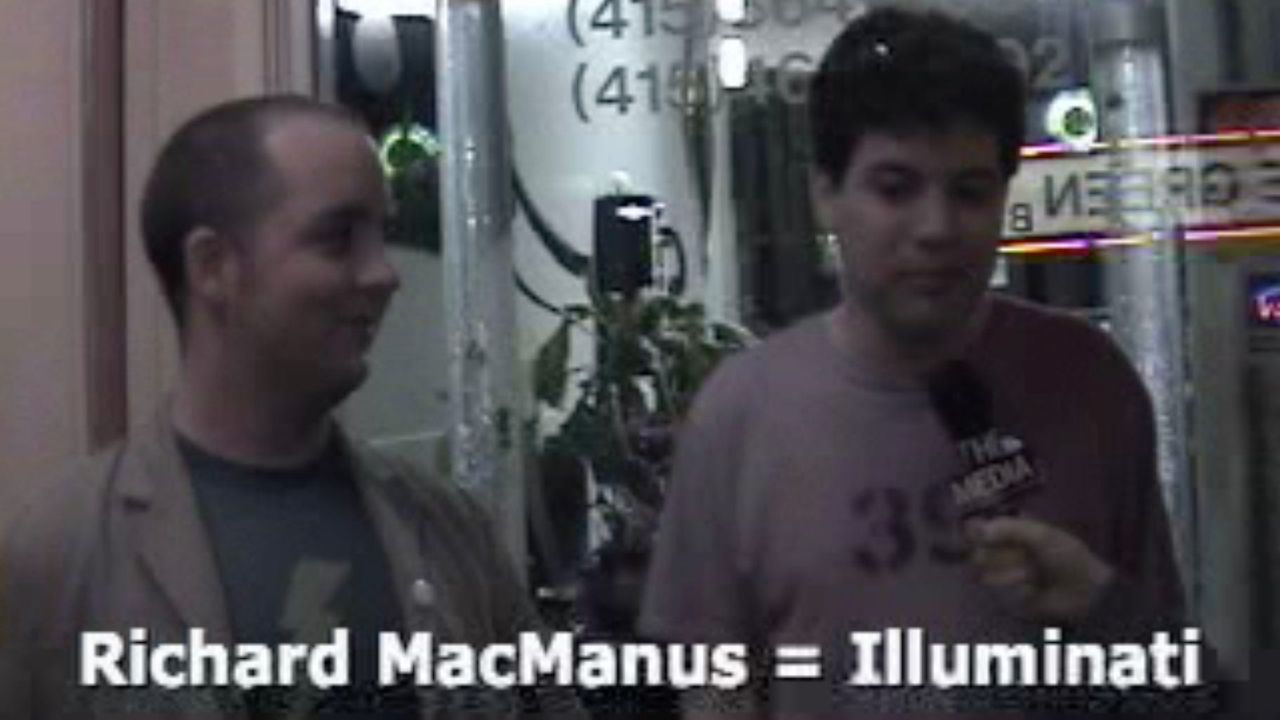
By October 2005, I was making a reasonable living from the web as a freelancer. I’d quit my New Zealand day job in August and was now earning income from various web consulting gigs, as well as from my ZDNet blog (and a small portion from Read/WriteWeb itself). But if I did move to Silicon Valley, I knew I’d have to get a full-time job — I would need it in order to get a working visa.
There were seemingly plenty of job opportunities at Yahoo and at some of the startups I’d met. So for the final days of my trip, I arranged some meetings with people who were currently employing me as a freelancer. I decided I would broach the topic of a full-time job with them.
The Wednesday before I left, I had coffee with Chris Alden, who had been a co-founder of Red Herring, a tech magazine from the Dot Com era that I was familiar with. He’d just started a new company to build an RSS Aggregator that he called Rojo, and I discussed ongoing contract work with him. The plan was I’d help write a spec for a new feature in Rojo when I got back to New Zealand.
After I mentioned I was considering moving here, Chris told me he would definitely hire me as a product manager if I lived here. That was good to hear, even though I knew he wasn’t in a position to support my visa application.
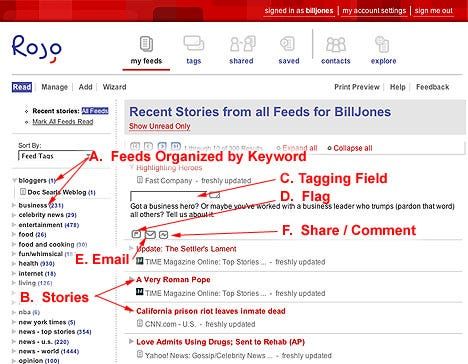
Another option for full-time work was ZDNet, who I currently blogged for part-time. ZDNet was owned by CNET, one of the largest “new media” companies in Silicon Valley. On the day before I headed back to New Zealand, I met up with my ZDNet boss, Dan Farber, in his office at CNET headquarters on 2nd St, between Howard and Folsom.
Dan was a long-time tech journalist; he’d worked for PC World and Macworld during the 1980s. I’d seen him at the Web 2.0 Conference — a short man with snowy white hair and a white goatee, rimless glasses and dressed in a suit. His lips always seemed to be pursed in a serious expression, but when I met him at the CNET office that day, I noticed that the corners of his mouth would occasionally turn up and betray a wry sense of humor.
I also discovered that Dan had a way of peering at you that seemed to cut through any bullshit. I’d known from the start that I was dealing with a serious journalist, even in our email conversations. But meeting him in person — with his grey hair, set mouth and no-nonsense eyes — I wondered what he really thought of bloggers like me. Did he think we were interlopers into his profession, or just another resource that established media organizations could utilize? In retrospect, I think it was the latter and that he was much more pragmatic than I gave him credit for in 2005. It said more about my own insecurity at that time that I felt like an imposter sitting in his CNET office in San Francisco.
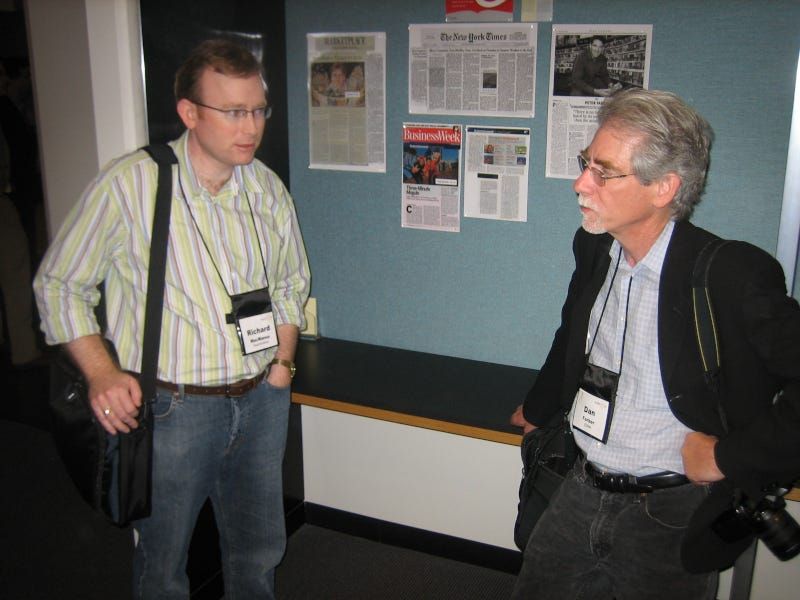
Dan told me he wanted to integrate the blogging format more into the newsroom. Along with his colleague David Berlind, he himself ran a tech blog called “Between the Lines” (tagline: “The blog for discriminating IT buyers”), which covered news from large IT companies like Novell and IBM, as well as write-ups of tech conferences like JavaOne and PC Forum. He and David reported on web technology in their blog, but from the perspective of IT professionals (“What CEOs should know about the 'recombinant Web’” was one sample headline from that time).
When he’d first approached me about starting a ZDNet blog back in August, the plan was to add more in-depth coverage of the Web 2.0 trend to ZDNet’s network. “I like blogs with lots of energy,” Dan had told me over email, as we were planning the new site. “Keeping track of what's going on, filtering for people what they need to know about the evolution of the Web and how it's changing user experiences, business models.” In addition to “documenting that evolution,” he added that “it would require some big thinking on occasion.”
While at the CNET office with Dan, I jotted down some of the business metrics we discussed. I’d gotten 80,000 page views in September, my first full month of blogging on Web 2.0 Explorer. This was actually more than the monthly average for RWW at the time! Then Dan pointed out that Between the Lines got 800,000 that same month. He was politely putting me in my place, but point taken: I had much to learn about professional blogging. Dan also told me that ZDNet was giving bloggers like me 25-30% of the revenue it received. I would be earning between $1,000-$1,500 from ZDNet every month, which was more than I was bringing in at the time from ReadWriteWeb.
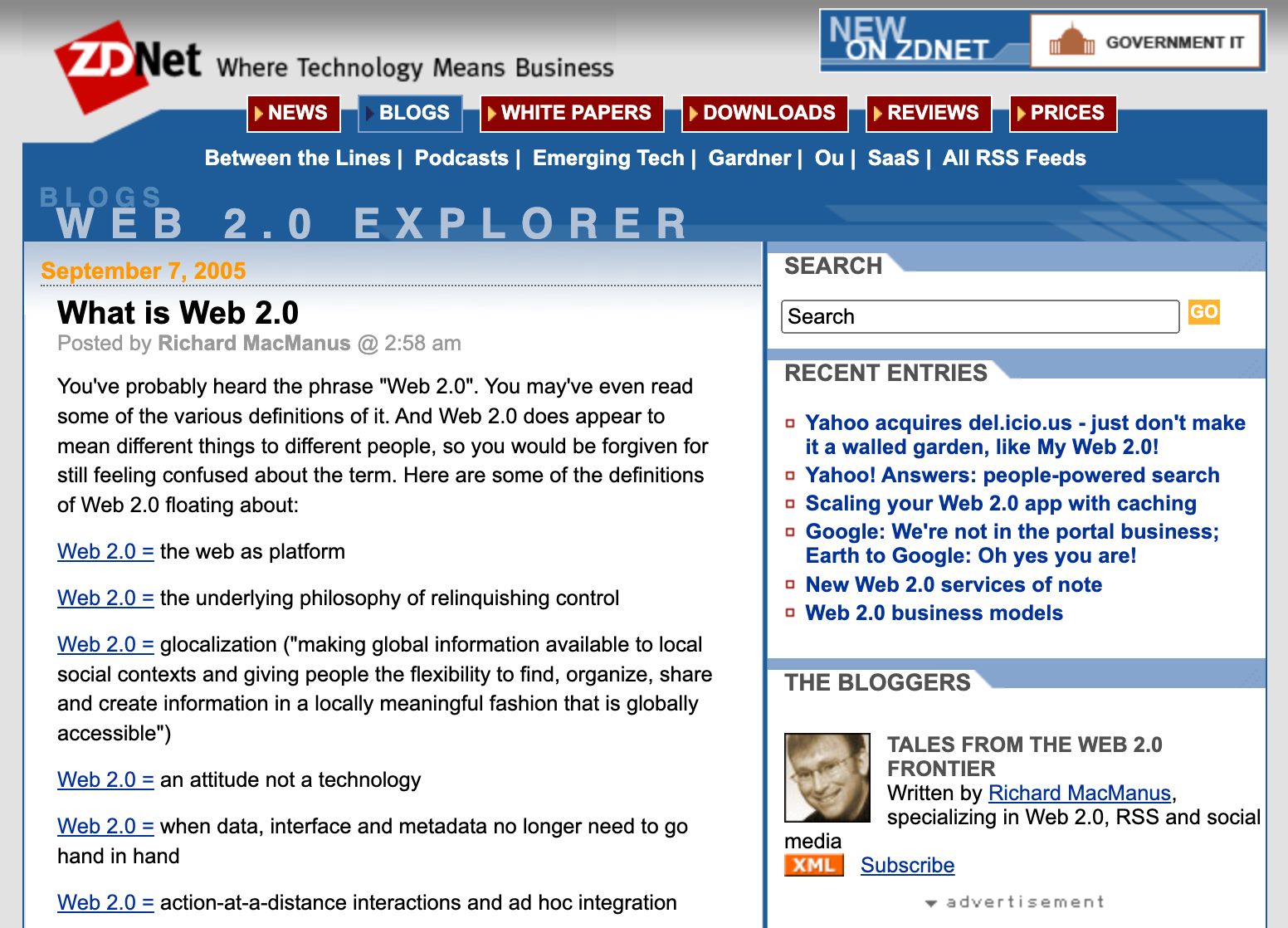
Hearing about the mechanics of my freelance income from ZDNet gave me pause. Sure, I could probably get a regular job at ZDNet if I asked. But couldn’t I also apply the same ZDNet formula for monetizing a blog to ReadWriteWeb? For ‘Web 2.0 Explorer’, I was only getting a quarter of the advertising revenue that it brought in every month; but I could get 100% of it if I monetized RWW. Also, RWW was still only a part-time occupation for me. If I devoted all my time to it, then surely I’d be able to grow RWW page views to something akin to what Between the Lines was getting.
For the first time, I began to think seriously about turning RWW into a full-time business. There had to be some way, I mused, to set up RWW as a company and get a US work visa that way. Perhaps I wouldn’t need a job at Yahoo or CNET.
The next day, a Friday, I was heading back home. Mike drove me to the airport, and Fred and Gabe came along for the ride. It felt like an emotional parting, and I didn’t want to leave. This could easily be home, I thought, as I waved goodbye to the guys and trudged into SFO departures.
Later, while on the plane, I reflected on where I was at with RWW as a business. I had only one steady sponsor at this time, who was paying $800 per month for a banner on my “Web 2.0 Weekly Wrapup” post. That had started back in April, after an Atlanta-based startup called ThePort Network had reached out to me offering to sponsor my weekly roundup of Web 2.0 news. I’d promised that their banner on the Weekly Wrapup would display on both my website and in my RSS feed (at the time, advertising within an RSS feed was a new thing — Yahoo had been fishing for my opinions on this all year). I’d made a 3-month agreement with ThePort Network, and when that finished I signed up another startup to take over: Onfolio. The current sponsor was Webmail.us, so I’d managed to get a regular sponsor for this one RWW feature for 7 months in a row now.
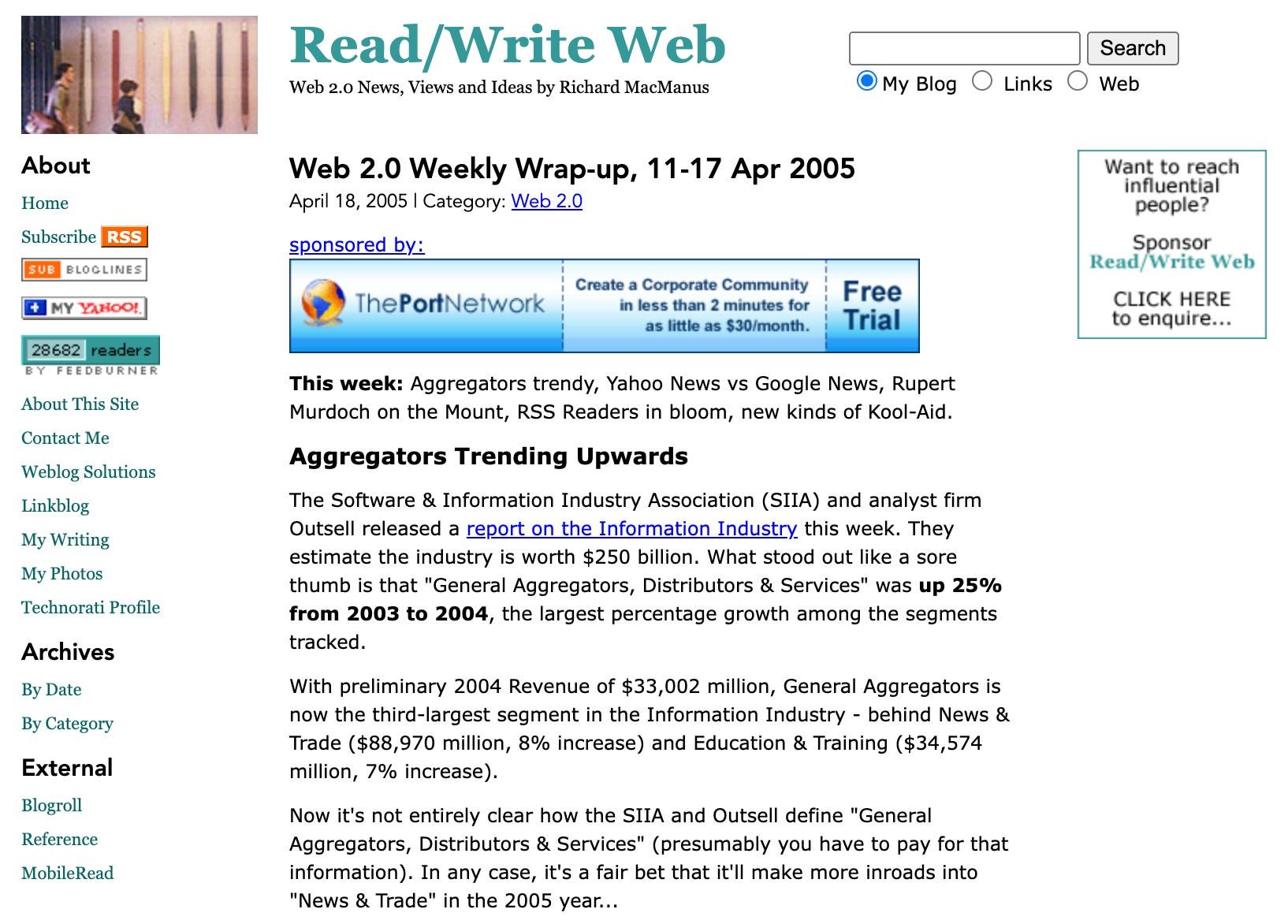
I jotted down in my notebook that I needed to expand where I placed advertising on ReadWriteWeb. There was no reason it should be limited to a single weekly post. It was time for me to pursue other ad and sponsor options for the site.
It would take time to ramp up revenue on RWW, though, so in the meantime I would continue to get by on freelance income. I had my ZDNet blog, for one. I also had freelance contract work lined up with Marc Canter’s company, as well as a media consultancy called 5ive (run by Susan Mernit, a Dot Com veteran who I’d had coffee with during my trip). There were other leads for me to pursue when I got home, including the RSS work that Chris Alden had spoken to me about. Plus, I had the O’Reilly Media book — although this only promised a $10,000 royalty advance, to be paid over several installments, which I was splitting 50/50 with Josh Porter.
I was feeling optimistic about my ability to earn a living from Silicon Valley, and hopefully in time from Read/WriteWeb itself. But I also knew I’d have to continue doing everything from a distance, for now.
“It sure feels like a bubble, doesn't it?” So wrote Web 2.0 Conference co-producer John Battelle in a New York Times op-ed on Friday, November 18, 2005, about a month after I’d returned home from my first trip to Silicon Valley. Without specifically mentioning the Dot Com boom of the late 1990s and early 2000s, he noted that the internet “is exciting again, and once again folks are rushing in.”
Then, a record scratch. “But regardless of all this déjà vu, we are not in a bubble,” Battelle wrote. He spent the rest of the article arguing why we weren’t in a bubble, but of course he’d opened himself up to the accusation that he ‘doth protest too much.’ The rest of the Web 2.0 era would be forever linked to the concept of a market bubble — and if or when it would burst.
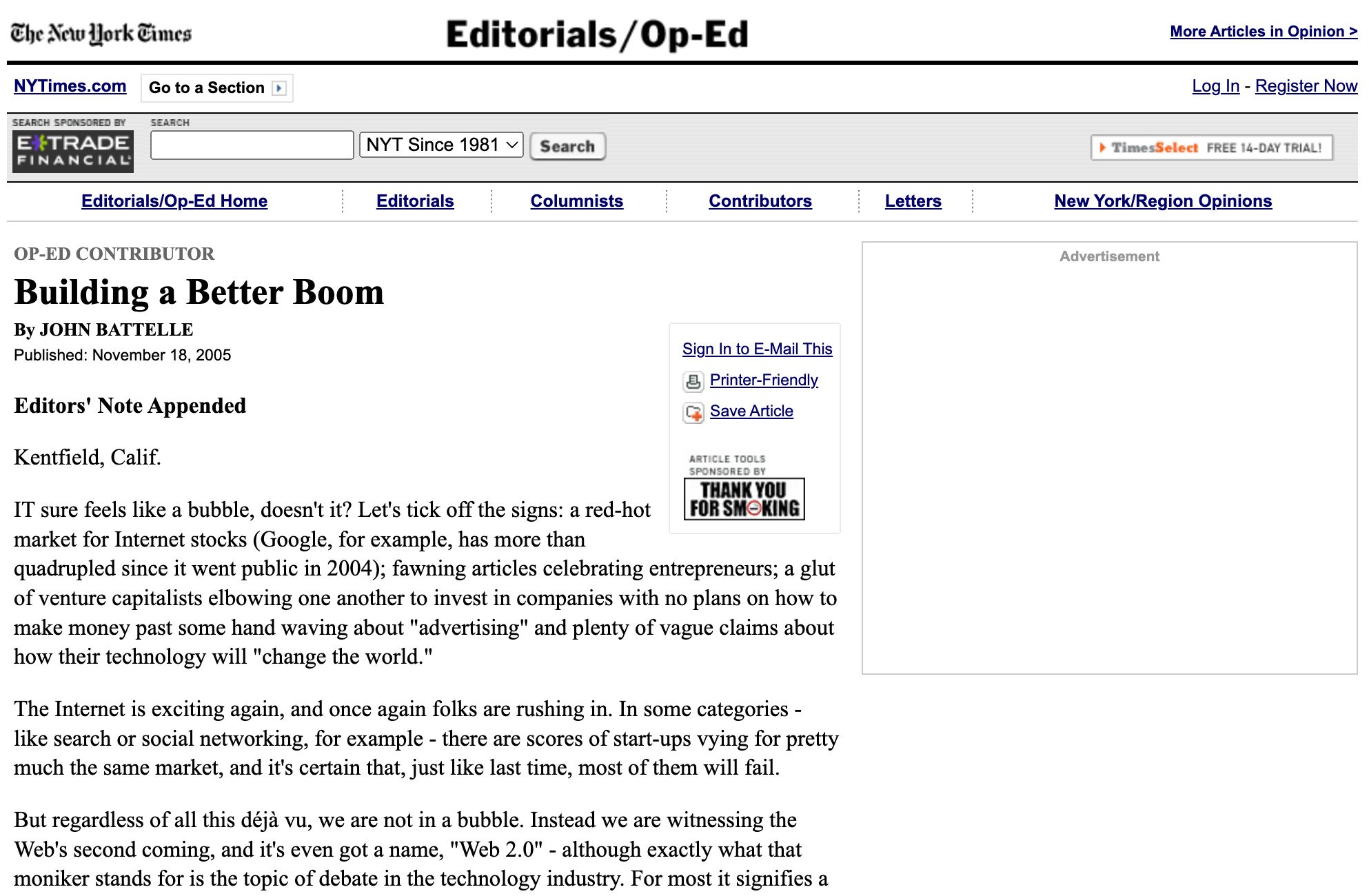
The month before, two young engineers, Eran Globen and Ryan King, had started a satiric blog called Supr.c.ilio.us — the name inspired by the popular social bookmarking site, del.icio.us. The day after Battelle’s article, Globen linked to it and noted that it was published on the same day as the latest TechCrunch BBQ, which he had attended. “Some 400 geeks munching on pizza and drinking free (as in beer) beer? I don’t see no bubble here.”
I was already aware of Eran and Ryan’s mock blog, as I’d become one of the targets of its good-natured but anarchic humor. The week before, the pair had been interviewed by Irina Slutsky, a Silicon Valley reporter who was launching her own YouTube channel, called Geek Entertainment TV. Slutsky introduced her debut show by saying she was “reporting from inside the bubble.” She then asked Globen, what is Web 2.0?
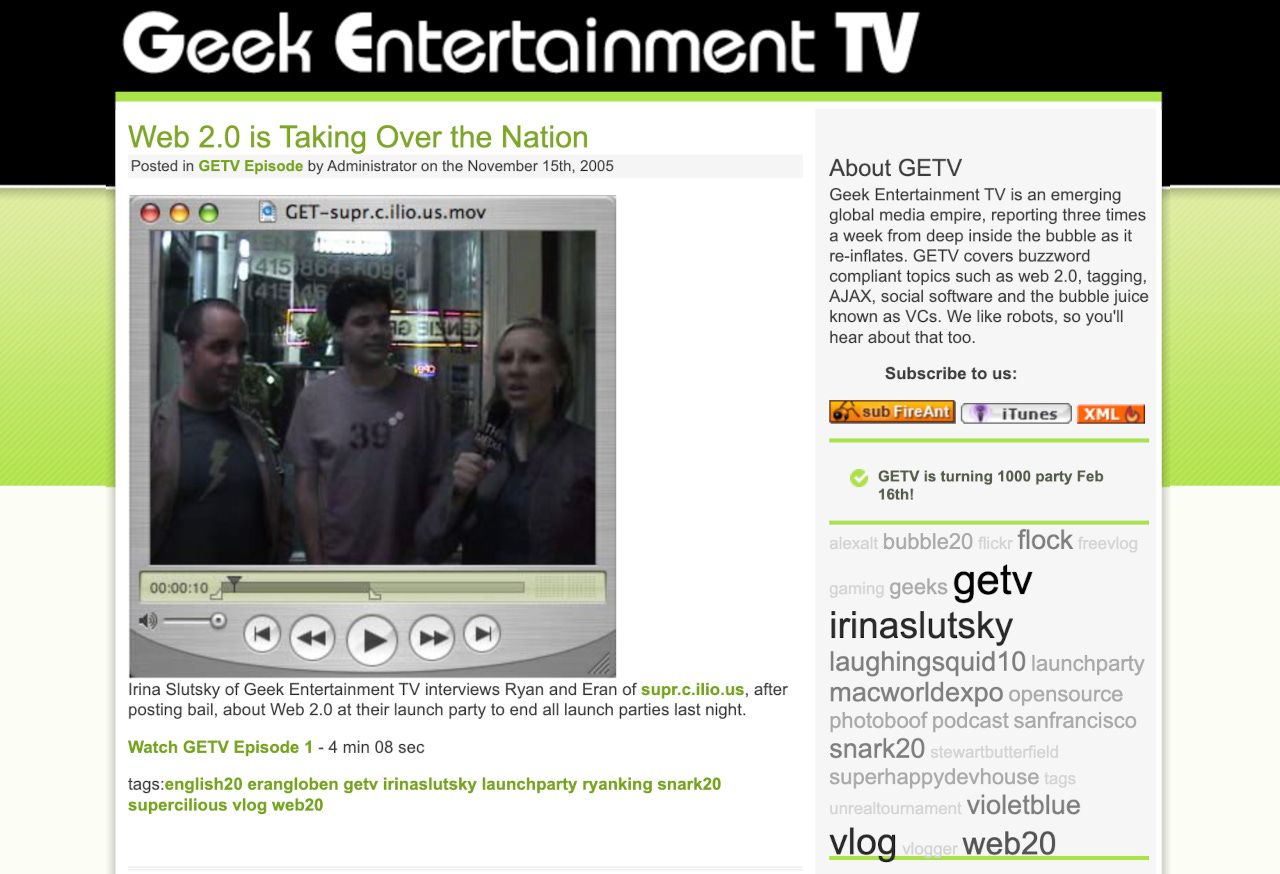
“Web 2.0 is a conspiracy that was started by people deep inside the Illuminati,” he deadpanned. Slutsky asked him to name names.
“Richard MacManus,” King piped up. “Yeah, basically him,” Globen affirmed, adding that “he’s hiding in New Zealand right now.”
It was funny and I immediately wrote a blog post in response, accepting and even encouraging the joke. But there was a serious side. Almost all the critics of Web 2.0 — including actual journalists like Nicholas Carr, Andrew Keen, and every writer at The Register — objected to the trend because they thought it was a market bubble. But I sided with John Battelle on this — I didn’t think Web 2.0 was a bubble, because real value was being built in this era of the web. The startups I was reporting on weren’t Pets.com 2.0.
However, I did think the term itself (Web 2.0) was increasingly problematic. The same week I’d been outed by Supr.c.ilio.us, I reported in my weekly wrap-up that staff from the open source browser Flock had banned the term from its office, and that del.icio.us creator Joshua Schachter was rebelling against being “the Web 2.0 poster child.”
By the end of 2005, even I was tired of all the arguments about the terminology. I wrote a regrettable post entitled “Web 2.0 is dead. R.I.P.” Talk about biting the hand that fed me! A few days later, I tried to explain myself. “The term has become too overblown and nebulous — and is holding us all back.” However, I promised that I would “continue to write about the technologies and impact of this current era of the Web.”
And why wouldn’t I? The bubble was only just getting started.
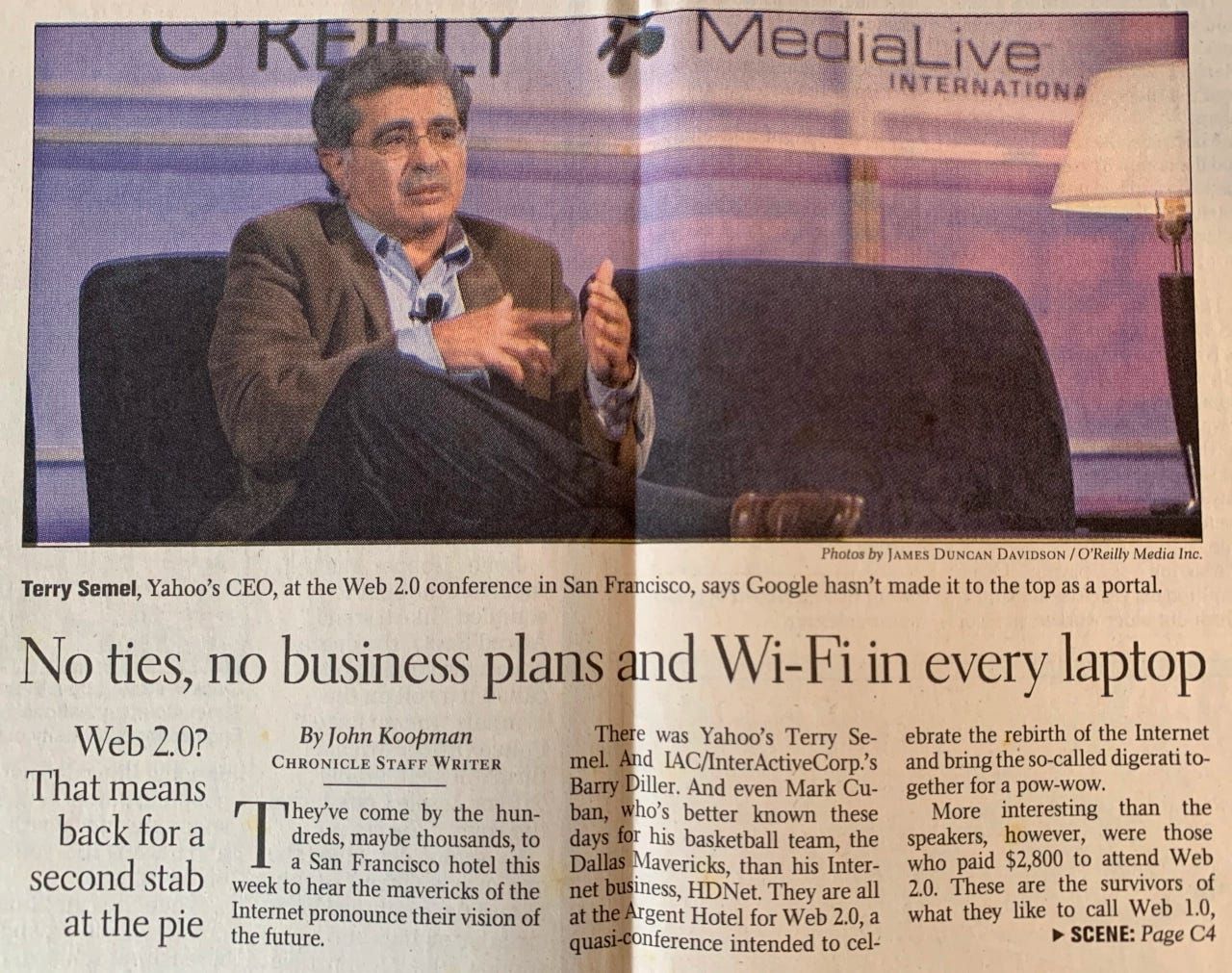
This post is part of my serialized book, Bubble Blog: From Outsider to Insider in Silicon Valley's Web 2.0 Revolution. View table of contents.
Next up: 012. The Gift Basket; Seattle, January 2006
Buy the Book
My Web 2.0 memoir, Bubble Blog: From Outsider to Insider in Silicon Valley's Web 2.0 Revolution, is now available to purchase:
- Paperback, US$19.99: Amazon; Bookshop.org
- eBook, US$9.99: Amazon Kindle Store; Apple Books; Google Play
Or search for "Bubble Blog MacManus" on your local online bookstore.